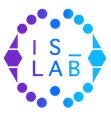VLEPPO is an integrated system for modeling and solving planning problems. It offers a convenient, intuitive and easy-to-use graphical interface, which allows design, comprehension and maintenance of planning domains and corresponding problems. VLEPPO accommodates for compatibility with standards, as most visual elements present in the system correspond to PDDL elements. Compliance with the PDDL standard is also achieved through the import and export features. VLEPPO provides increased flexibility in integration of external planning systems by employing the current technology of web services. The system was implemented in Java for portability and interoperability purposes.


